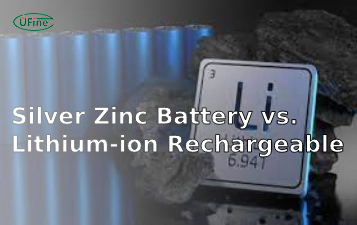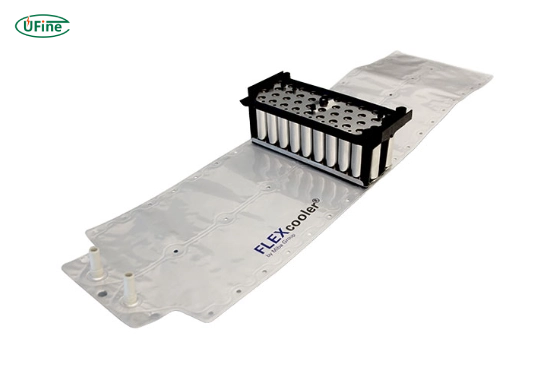
- Part 1. What is a gravity battery?
- Part 2. What are traditional batteries?
- Part 3. Key differences between gravity batteries and traditional batteries
- Part 4. Advantages of gravity batteries
- Part 5. Disadvantages of gravity batteries
- Part 6. Advantages of traditional batteries
- Part 7. Disadvantages of traditional batteries
- Part 8. Applications of gravity batteries
- Part 9. Applications of traditional batteries
- Part 10. FAQs anout gravity battery vs traditional battery
Gravity batteries are emerging as a compelling alternative to traditional energy storage solutions. Gravity batteries offer a unique method of storing and releasing energy by harnessing gravitational potential energy, which contrasts sharply with the chemical processes used in conventional battery technologies. This article aims to provide an in-depth comparative analysis of gravity batteries versus traditional batteries, exploring their mechanisms, advantages, disadvantages, and applications.
Key Takeaways: Gravity Battery vs. Traditional Battery
- ✅ Gravity batteries store energy mechanically, traditional batteries use chemistry.
- ✅ Gravity systems last decades; lithium-ion batteries degrade after 500-2000 cycles.
- ✅ Traditional batteries win in portability; gravity excels in grid-scale storage.
Part 1. What is a gravity battery?
A gravity battery operates on a straightforward yet effective principle: it stores energy by lifting a heavy mass to a certain height and releasing it by allowing it to descend. This process converts gravitational potential energy into kinetic energy, which can then be transformed into electrical energy.
How does it work?
The working mechanism of gravity batteries can be broken down into two main phases:
- Energy Storage: When excess energy is available—such as during peak solar or wind production—this energy is utilized to lift a heavy mass (like a concrete block or steel weight) to a predetermined height. The amount of energy stored is directly proportional to the mass’s weight and the height it is lifted.
- Energy Release: When there is an energy demand, the mass can descend. As it falls, it drives a generator that converts its kinetic energy back into electrical energy. The efficiency of this process can be influenced by factors such as friction and mechanical design, but advancements in technology are continually improving these systems.
Gravity batteries can be particularly effective in long-term energy storage applications, as they can theoretically operate for decades with minimal maintenance.
For deeper technical insights, read our guide on how lithium-ion batteries work.
Part 2. What are traditional batteries?
Traditional batteries are devices that store electrical energy chemically within their components. They consist of two electrodes (anode and cathode) and an electrolyte facilitating ion movement between them. When charged, chemical reactions occur at the electrodes that store energy; when discharged, these reactions reverse to release energy.
Types of traditional batteries
- Lead-acid batteries are among the oldest types of rechargeable batteries. They are commonly used in vehicles and backup power systems due to their low cost and reliability. They consist of lead dioxide (PbO2) as the positive plate and sponge lead (Pb) as the negative plate submerged in sulfuric acid.
- Lithium-Ion Batteries: Known for their high energy density and efficiency, lithium-ion batteries are widely used in portable electronics and electric vehicles. They operate through lithium ions moving between the anode (usually made of graphite) and cathode (often made from lithium metal oxide) during charging and discharging cycles.
- Nickel-cadmium batteries: These batteries are known for their durability and ability to perform well in extreme temperatures, but they have fallen out of favor due to environmental concerns regarding cadmium toxicity. They consist of nickel oxide hydroxide as the positive electrode and cadmium as the negative electrode.
- Nickel-Metal Hydride Batteries: These batteries are similar to nickel-cadmium batteries but use a hydrogen-absorbing alloy instead of cadmium. They offer better capacity and are often used in hybrid vehicles.
- Solid-State Batteries: An emerging technology that replaces liquid electrolytes with solid materials, offering improved safety and potentially higher energy densities than conventional lithium-ion batteries.
Part 3. Key differences between gravity batteries and traditional batteries
Gravity and traditional batteries differ fundamentally in their storage and release mechanisms. Here’s a detailed comparison:
- Energy Storage Method: Gravity batteries rely on mechanical systems that utilize gravitational potential energy, while traditional batteries store energy chemically through electrochemical reactions.
- Energy Density: Traditional batteries generally have higher energy densities than gravity batteries, allowing them to store more power in smaller volumes.
- Cycle Life: Gravity batteries can offer unlimited cycle life because they do not suffer from chemical degradation like traditional batteries over time.
- Cost Efficiency: While gravity battery systems may have lower operational costs due to minimal maintenance needs, traditional batteries often require higher initial investments but provide immediate power solutions.
- Environmental Impact: Gravity batteries utilize natural materials with a minimal ecological footprint, whereas traditional battery production can involve hazardous materials that pose environmental risks during manufacturing and disposal.
Comparison Table
| Feature | Gravity Battery | Traditional Battery |
|---|---|---|
| Energy Storage Method | Gravitational potential | Electrochemical reactions |
| Energy Density (Wh/kg) | ~20–30 Wh/kg | Lead-Acid: ~30–50 Wh/kg; Lithium-Ion: ~150–250 Wh/kg |
| Cycle Life | Potentially unlimited | Lead-Acid: ~500 cycles; Lithium-Ion: ~500-2000 cycles |
| Cost per kWh Stored | ~$100-$200 | Lead-Acid: ~$150; Lithium-Ion: ~$300-$600 |
| Environmental Impact | Minimal | Variable; depends on materials used |
A 2024 study in Nature Energy confirmed gravity batteries achieve 85% round-trip efficiency in grid-scale applications.
Part 4. Advantages of gravity batteries
Gravity batteries present several unique benefits:
- Sustainability: Using natural materials like concrete or steel makes gravity batteries more environmentally friendly than traditional chemical processes.
- Longevity: With minimal wear on mechanical components, gravity batteries can last decades without significant performance degradation.
- Scalability: The system can be easily scaled up or down based on specific energy needs by adjusting the size or weight of the mass involved.
Part 5. Disadvantages of gravity batteries
Despite their advantages, gravity batteries face challenges:
- Space Requirements: They require significant physical space for installation due to the need for large masses and height.
- Lower Energy Density: Unlike traditional batteries, gravity batteries store less energy within a given volume.
- Mechanical Complexity: The presence of moving parts introduces potential points of failure that necessitate regular maintenance.
Part 6. Advantages of traditional batteries
Traditional batteries have been widely adopted for various reasons:
- High Energy Density: They pack more power into smaller spaces, making them ideal for portable applications.
- Established Technology: The technology is well-understood, and extensive research has backed its efficiency and reliability.
- Rapid Deployment: Traditional batteries can be deployed quickly across various settings without extensive infrastructure changes.
Part 7. Disadvantages of traditional batteries
However, traditional batteries also come with drawbacks:
- Limited Lifespan: Chemical degradation leads to reduced capacity over time.
- Environmental Concerns: Certain production and disposal processes can have significant ecological impacts.
- Cost Variability: Prices can fluctuate based on raw material availability and market demand.
Part 8. Applications of gravity batteries
Gravity batteries find particular suitability in specific applications:
- Grid Energy Storage: They are ideal for balancing supply and demand in renewable energy systems like solar farms or wind turbines.
- Pumped Hydro Storage Alternatives: Gravity battery systems can serve as alternatives where geographical constraints limit hydroelectric options.
Real-World Example: Gravity Battery in Action
In 2023, Energy Vault deployed a 100MWh gravity battery system in Switzerland using 35-ton composite blocks. This system can power 3,000 homes for 8 hours, demonstrating the scalability of gravitational energy storage for renewable grids.
Part 9. Applications of traditional batteries
Traditional batteries find usage across various sectors:
- Electric Vehicles (EVs): Essential for powering electric cars due to their high energy density.
- Consumer Electronics: Commonly found in smartphones, laptops, tablets, and other portable devices.
Part 10. FAQs anout gravity battery vs traditional battery
Which is more efficient: gravity battery or lithium-ion?
Lithium-ion batteries currently achieve 90-95% efficiency, while gravity batteries reach 80-85%. However, gravity systems maintain efficiency over decades, unlike lithium-ion which degrades after 500+ cycles.
How long do gravity batteries last compared to traditional ones?
Gravity batteries can operate 50+ years with minimal maintenance, versus 5-15 years for lithium-ion and 3-8 years for lead-acid batteries. Their mechanical design avoids chemical degradation.
Are gravity batteries cheaper than lithium-ion?
Initial costs for gravity battery systems average $100-$150/kWh, lower than lithium-ion’s $300-$600/kWh. However, lithium-ion wins in compact installations due to higher energy density.
Can gravity batteries power homes?
Yes, but residential gravity systems require 10x more space than lithium-ion. A typical home needs 20-ton weights lifted 30m high to store 24kWh – equivalent to 2 Tesla Powerwall units.
Which is greener: gravity or chemical batteries?
Gravity batteries use 100% recyclable materials (steel/concrete) with near-zero pollution. Traditional batteries require mining lithium/cobalt and have 15-30% recycling rates in 2024.
Related Tags:
More Articles

What is the Difference Between Silver Zinc Battery vs. Lithium-ion Rechargeable?
Compare silver zinc and lithium-ion rechargeable batteries: energy density, cycle life, safety, cost, and uses in drones, medical devices, EVs, and electronics.
What are Watts and Watt Hours in Battery?
Understand watt vs watt-hour in batteries: key differences, how to calculate capacity, and why they matter. Includes free comparison table.
Best 10 Blood Pressure Monitor Battery Review: Finding the Most Reliable
Are you looking for a reliable Blood Pressure Monitor battery? Here is a complete guide with the top 10 best blood pressure monitor batteries.
Bluetooth Headphone Battery Guide: All You Need to Know
Maximize headphone battery life with expert tips! Learn how to charge, check, troubleshoot, and choose the best bluetooth headphone battery in 2025.
LiFePO4 Battery VS. Lithium-ion Polymer Battery: Which One Is Best?
Comprehensive comparison of LiFePO4 vs Lithium Ion Polymer batteries: energy density, safety, lifespan, cost. Find out which battery suits your needs in 2025.




